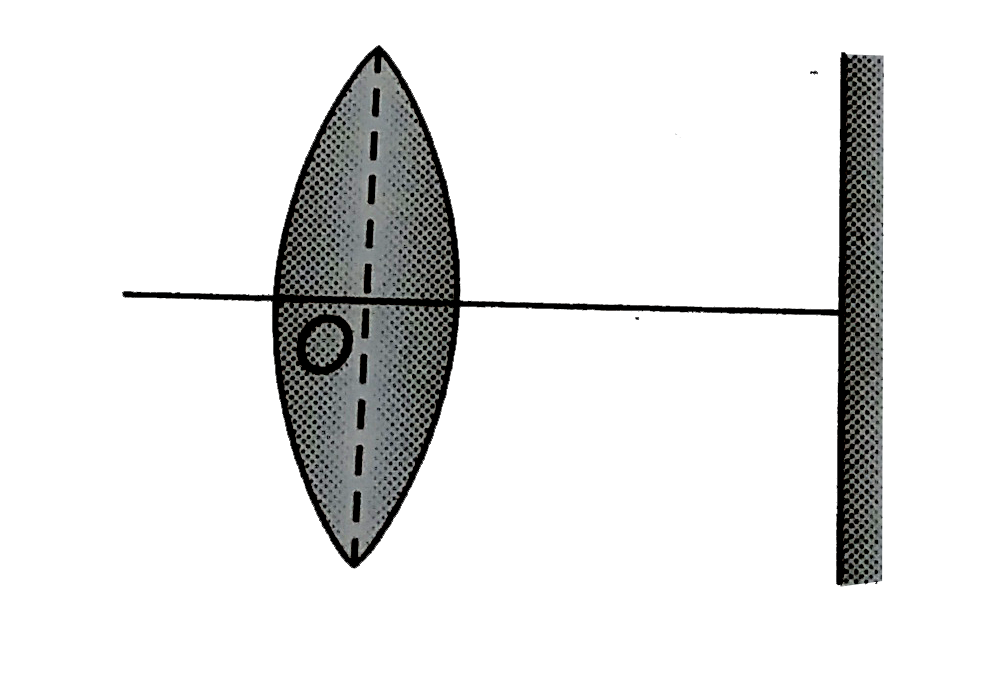Assertion: In case of single refraction by a plane surface image and object are on same side.
Reason: If object is real, image will be virtual and vice-versa.
If both Assertion and Reason are true and the Reason is correct explanation of the Assertion.
If both Assertion and Reason are true but Reason is not the correct explanation of the Assertion.
If both Assertion is true, but the Reason is false.
If both Assertion is false but the Reason is true.
The correct Answer is:B
To solve the question, we need to analyze both the assertion and the reason provided.
1. Understanding the Assertion:
- The assertion states that in the case of single refraction by a plane surface, the image and object are on the same side.
- For a plane surface (like a flat mirror), when light rays from a real object strike the surface, they refract. The rays diverge after refraction, and if we trace them backward, they appear to originate from a point behind the surface. This point is where the virtual image is formed.
2. Understanding the Reason:
- The reason states that if the object is real, the image will be virtual and vice-versa.
- A real object emits light rays that, when refracted through a plane surface, diverge. The virtual image formed is on the same side as the object because the rays do not converge but appear to come from a point behind the surface.
3. Analyzing Both Statements:
- Both the assertion and the reason are true:
- The assertion is true because the virtual image is formed on the same side as the real object after refraction.
- The reason is also true because a real object does indeed produce a virtual image when light rays diverge after refraction.
4. Determining the Relationship:
- However, the reason does not explain why the assertion is true. The assertion is based on the behavior of light rays at a plane surface, while the reason discusses the nature of the image concerning the type of object (real or virtual).
- Thus, while both statements are true, the reason does not provide a correct explanation for the assertion.
5. Conclusion:
- Therefore, the correct answer is that both the assertion and reason are true, but the reason is not the correct explanation of the assertion.
Final Answer:
- Both assertion and reason are true, but the reason is not the correct explanation of the assertion.
- The assertion states that in the case of single refraction by a plane surface, the image and object are on the same side.
- For a plane surface (like a flat mirror), when light rays from a real object strike the surface, they refract. The rays diverge after refraction, and if we trace them backward, they appear to originate from a point behind the surface. This point is where the virtual image is formed.
- The reason states that if the object is real, the image will be virtual and vice-versa.
- A real object emits light rays that, when refracted through a plane surface, diverge. The virtual image formed is on the same side as the object because the rays do not converge but appear to come from a point behind the surface.
- Both the assertion and the reason are true:
- The assertion is true because the virtual image is formed on the same side as the real object after refraction.
- The reason is also true because a real object does indeed produce a virtual image when light rays diverge after refraction.
- However, the reason does not explain why the assertion is true. The assertion is based on the behavior of light rays at a plane surface, while the reason discusses the nature of the image concerning the type of object (real or virtual).
- Thus, while both statements are true, the reason does not provide a correct explanation for the assertion.
- Therefore, the correct answer is that both the assertion and reason are true, but the reason is not the correct explanation of the assertion.
- Both assertion and reason are true, but the reason is not the correct explanation of the assertion.
Topper's Solved these Questions
- REFRACTION OF LIGHTBOOK - DC PANDEY ENGLISHCHAPTER - REFRACTION OF LIGHTEXERCISE - Level 1 Objective
38 Videos
- REFRACTION OF LIGHTBOOK - DC PANDEY ENGLISHCHAPTER - REFRACTION OF LIGHTEXERCISE - Objective Questions
1 Videos
- REFRACTION OF LIGHTBOOK - DC PANDEY ENGLISHCHAPTER - REFRACTION OF LIGHTEXERCISE - Exercise 31.8
8 Videos
- REFLECTION OF LIGHTBOOK - DC PANDEY ENGLISHCHAPTER - REFLECTION OF LIGHTEXERCISE - Subjective
9 Videos
- SEMICONDUCTORSBOOK - DC PANDEY ENGLISHCHAPTER - SEMICONDUCTORSEXERCISE - Subjective
12 Videos
Similar Questions
Knowledge Check
Where should an object be placed so that a real and inverted image of the same size as the object is obtained using a convex lens ?
AfB2fCf/2Dcentre
Assertion: Minimum distance between object and its real image by a convex lens is 4f.
Reason: If object distance from a convex lens is 2f, then its image distace is also 2f.
View SolutionA lens forms an erect, magnified and virtual image of an object.
Name the lens.
View SolutionWhat type of mirror can be used to obtain a real image of an object?
View SolutionWhich lens can produce a real and inverted image of an object ?
View SolutionA : Plane and convex mirrors can produce real images of objects.
R : A plane of convex mirror can produce a real image if the object is virtual.
View SolutionWhen we see an object, image formed on the retina is
(i) real (ii) virtual
(iii) erect (iv) inverted
View Solution
The distance between a convex lens and a plane mirror is 10 cm. The parallel rays incident on the convex lens after reflection from the mirror forms image at the optical centre of the lens. Focal length of lens will be
View Solution
